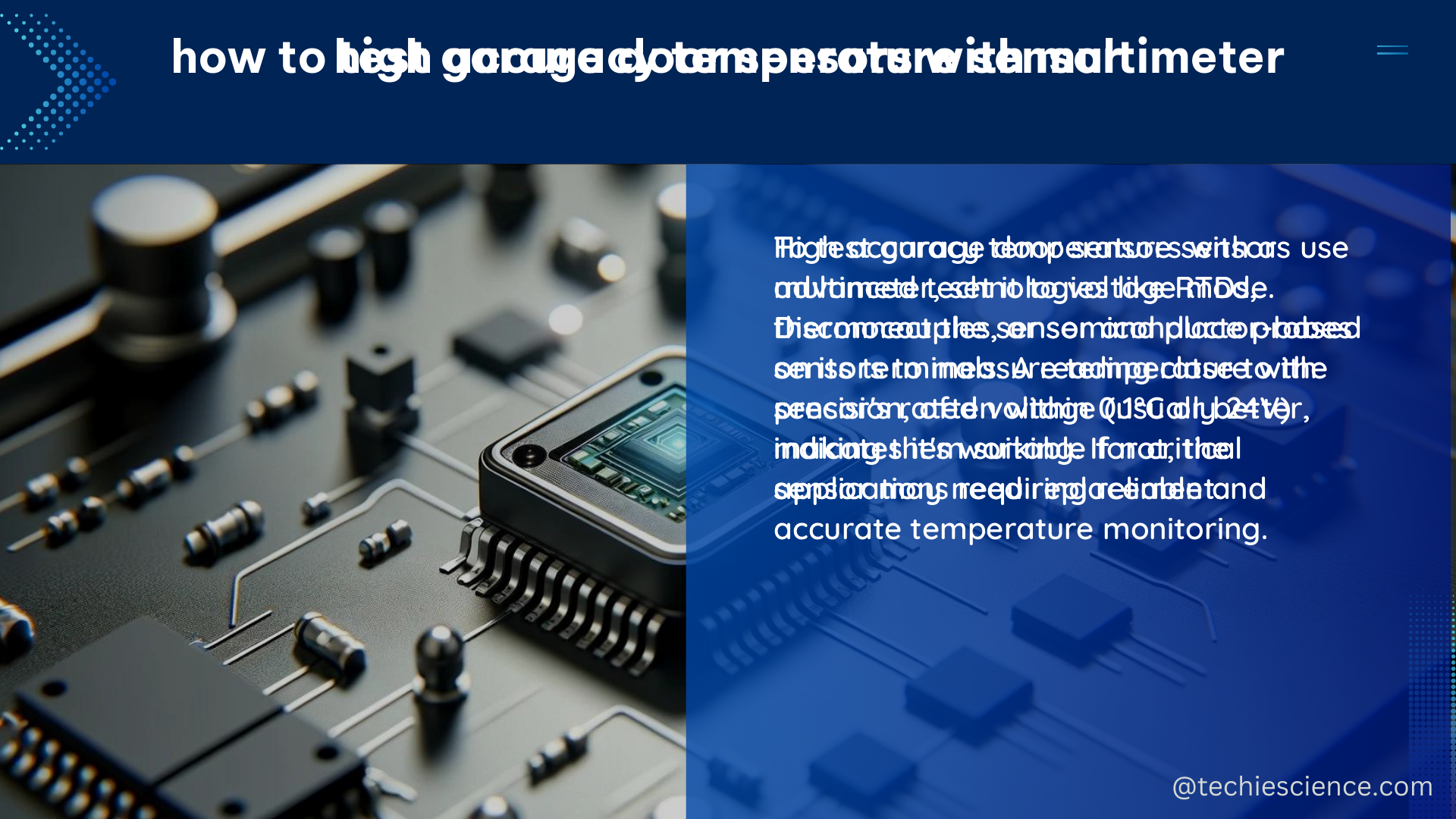High accuracy temperature sensors are essential for a wide range of applications, from medical devices and aerospace engineering to automotive and industrial control systems. These sensors are designed to provide precise and reliable temperature measurements with minimal errors and interference. In this comprehensive guide, we will delve into the technical specifications, unique perspectives, and a step-by-step DIY approach to building a high accuracy temperature sensor.
Technical Specifications of High Accuracy Temperature Sensors
Operating Range
High accuracy temperature sensors typically have an operating range of -55°C to +150°C, making them suitable for a wide variety of applications that require precise temperature measurements across a broad temperature spectrum.
Output Signal Type
These sensors can be classified based on their output signal type, which can be analog (voltage or current), logic, or digital. The choice of output signal type depends on the specific requirements of the application and the integration needs with the overall system.
Accuracy
The accuracy of a high accuracy temperature sensor is described as the maximum expected error between the actual and ideal output signals. This is often expressed relative to the sensor’s span, with a typical guarantee of being accurate to within 5% of the span.
Precision
The precision of a temperature sensor refers to its ability to produce consistent and reproducible measurements. This is often expressed as a percentage of the sensor span or as a standard deviation.
Response Time
One limitation of high accuracy temperature sensors is their typically slow response time due to thermal inertia. This is an important factor to consider when selecting a sensor for applications that require fast temperature measurements.
Calibration
To ensure accurate readings, high accuracy temperature sensors need to be calibrated using a two-point calibration process. This involves measuring the sensor’s output at two known temperatures to establish a linear relationship between the sensor’s output and the actual temperature.
Chemical Filters
In some applications, interfering components in the sample can affect the accuracy of temperature measurements. To mitigate this, high accuracy temperature sensors may be equipped with chemical filters, such as charcoal, to remove these interfering components.
Unique Perspective on High Accuracy Temperature Sensors

Semiconductor temperature sensors, such as silicon diodes and thermistors, are a popular choice for high accuracy temperature measurements due to their ease of integration, ruggedness, and low cost. However, these sensors have limitations in terms of accuracy, stability, thermal chip design, and response time.
To overcome these limitations and achieve the highest possible accuracy, it is essential to consider the sensor’s specifications, the measurement technique, and the environmental factors that may affect the temperature readings. Calibration and the use of chemical filters can significantly improve the accuracy and reliability of temperature measurements.
DIY High Accuracy Temperature Sensor
Building a DIY high accuracy temperature sensor can be a rewarding project for those interested in hands-on electronics and sensor development. Here’s a step-by-step guide:
-
Choose a Semiconductor Temperature Sensor: Select a high-quality semiconductor temperature sensor, such as a silicon diode or a thermistor, that meets the accuracy, precision, and operating range requirements of your application.
-
Calibrate the Sensor: Perform a two-point calibration process to establish a linear relationship between the sensor’s output and the actual temperature. This can be done using a temperature-controlled bath or a precision reference thermometer.
-
Implement Chemical Filters: Depending on your application, consider adding chemical filters, such as charcoal, to the sensor setup to remove any interfering components in the sample that could affect the temperature measurements.
-
Integrate the Sensor into Your Circuit: Carefully integrate the calibrated temperature sensor into your circuit, ensuring proper power supply, signal conditioning, and data acquisition.
-
Test and Validate: Thoroughly test the DIY high accuracy temperature sensor to ensure it meets the required specifications and provides reliable and consistent temperature measurements.
By following this DIY approach, you can create a high accuracy temperature sensor tailored to your specific needs and gain a deeper understanding of the underlying principles and technologies involved.
References
- Sensing and Sensor Fundamentals – SpringerLink, 2014-01-04, https://link.springer.com/chapter/10.1007/978-1-4302-6014-1_2
- Sensors for daily life: A review – ScienceDirect.com, https://www.sciencedirect.com/science/article/pii/S2666351121000425
- Laboratory Key Performance Indicators (KPIs) – BioSistemika, https://biosistemika.com/blog/laboratory-key-performance-indicators-kpis/

The lambdageeks.com Core SME Team is a group of experienced subject matter experts from diverse scientific and technical fields including Physics, Chemistry, Technology,Electronics & Electrical Engineering, Automotive, Mechanical Engineering. Our team collaborates to create high-quality, well-researched articles on a wide range of science and technology topics for the lambdageeks.com website.
All Our Senior SME are having more than 7 Years of experience in the respective fields . They are either Working Industry Professionals or assocaited With different Universities. Refer Our Authors Page to get to know About our Core SMEs.